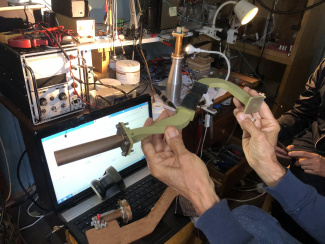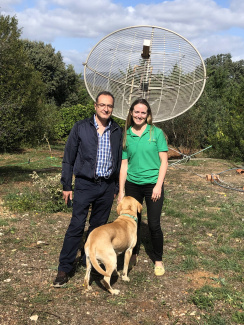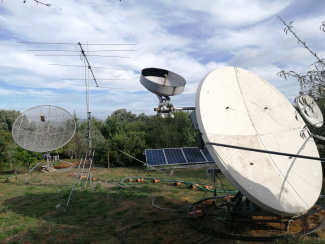At long lang - an exchange!
We are very happy that the first teacher exchange in 2 years could take place recently.
Máire Duffy from Ireland and Nelson Alves Correia from Portugal know each other already from two European Science on Stage festivals. Together, they developed a project which has been also selected as Joint Project for the European Science on Stage festival 2022!
Read Máire‘s report here:
Nelson and I first met in Debrecen, Hungary and then again in Cascais, Portugal. We kept in touch after both Science on Stage festivals. We both had an interest in astronomy so felt we would be a good match for a joint project. Nelson and I decided to apply for the teacher exchange for our joint project on "Radio Astronomy in Schools" so that I could meet an expert to upskill in radio astronomy.
Once I arrived in Torres Novas I got to spend the whole day with Carlos Gorjao from AMRAD, a Portuguese organisation that works in radio communication for investigation, education and development. AMRAD is the organisation that donated the satellite dish to Nelson to build his radio telescope. Spending the day with Carlos was fascinating and I was totally inspired by all the different radio telescopes that he had in his own back garden.
Some of the radio telescopes he had were for looking at the hydrogen line, 1-2 GHz, to looking at moon reflections, 10 GHz. He was a fountain of knowledge about the different frequencies that each worked at and how dish size and antenna size affected the gain and wavelength detected. He demonstrated how each worked. Carlos also showed me different horn antennas and software such as radioskypipe, flexradio systems, and how to use my own SDR (software-defined radio).
We looked into calculating dimensions suitable for my horn antenna that my students will build and suitable connections to use. Carlos was able to give me advice on wires suitable for use with my horn antenna. Nelson and I also worked on a new activity for looking at the frequencies emitted by different car keys using our SDRs with an attached antenna. We also made plans for developing a website and also Padlet where we can publish our activities, photos, and results from our joint project.
On my visit to Nelson's school, I got to spend time in the different science labs and exploring the equipment used. We enjoyed discussing different approaches to teaching physics, from methodologies to resources to assessment techniques. Seeing the progress Nelson's students had made on the stand for his radio telescope was very impressive. I got to meet various teachers in Nelson's school and also a Polish group of teachers and students who were on an exchange to the school. It was so interesting learning about the education system in each country. Everyone was very welcoming and helpful.
Máire Duffy, Ireland, Clonkeen College and Nelson Alves Correia, Portugal, Agrupamento de Escolas Gil Paes



Share this page